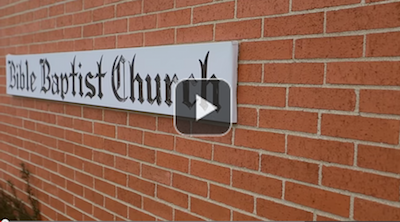JANUARY 14, 2018
THE DEATH AND RESURRECTION OF LAZARUS (PART III)
INTRODUCTION:
1. When Jesus at last arrived at Bethany He did not come into the town, but held up at the outskirts, apparently near to the place where Lazarus was buried. It was there, near to the place where His work was to be done that first Martha and then Mary went out to meet Him.
2. To these sisters it appeared that Jesus had come too late. Bothe women, when they saw Him, greeted Him with exactly the same words: “Lord, if thou hadst been here, my brother had not died.” (Verses 21, 32)
3. We cannot know their exact tone, but by comparing their manner and posture, it would seem that Martha may have spoken more sharply than Mary, at least at first.
4. It would seem that both of the sisters understood the returned message from Jesus to mean that their brother would not die from his sickness. (Verse 4) They very likely understood from His words that He would come and heal Lazarus. “This sickness is…for the glory of God, that the Son of God might be glorified thereby.”
5. It will soon become quite clear what His words meant, at which time they will have answers to a number of other questions respecting this whole affair.
I. NOTICE FIRST CHRIST’S PERSONAL GRIEF, AND THE EXPRESSION OF SYMPATHY AND SORROW WHICH HE SHARED WITH HIS FRIENDS. (VERSES 33-37)
A. JESUS EXPERIENCED INWARD GROANS AND A TROUBLED SPIRIT. (VERSE 33)
1. Before addressing the difficulties surrounding this reality, let us consider what stirred Him and realize that Jesus, as a real man, is truly touched with the feeling of our infirmities, and is moved in sympathy with the sorrows of His loved ones. “When Jesus therefore saw her weeping…”
a) As God, He knew all of their feelings, and needed not to see their tears in order to know they were hurting.
b) Yet, as one with our nature, He was peculiarly stirred by the sight of Mary and others weeping.
c) Let us remember that our precious Savior is the same forever. (Heb. 13:8) He did not leave His humanity behind when He ascended up to heaven.
2. Opinions vary as to what is meant by the expression “He groaned in spirit,” and what caused this groaning.
a) The word is pregnant with meaning, and includes the idea of anger, indignation, deep agitation, and grief.
b) Some think that the sight of Martha and Mary weeping was an indication of inordinate grief, which reflected their unbelief, and thus Jesus groaned in spirit.
c) Others think it was the deepest anger, agitation, and indignation for what sin had done to the creature.
d) Others believe it was indeed inward agitation, etc., for what sin had done, coupled with grief and compassion. It was entirely inward at this time. Burgon says the “spirit” here means Christ’s inward soul.
3. The fact that Jesus was troubled poses another mystery. The phrase literally translated, as the margin reads, is “He troubled Himself.”
a) As man, our Lord had all of the feelings, passion, and affections of a man, but all under such perfect control that there was no disorder or excess.
b) Still, this phrase may simply be a Hebraism for “He was troubled.”
c) One thing is abundantly clear; there can be nothing wrong with being greatly moved by the sight of sorrow, since Jesus moved Himself to grieve.
B. JESUS’ CONCERN WAS FURTHER REVEALED BY HIS INQUIRY ABOUT THE PLACE OF LAZARUS’ INTERMENT. (VERSE 34)
1. We cannot suppose that our Lord, Who knew all things, even to the moment when Lazarus died, could really need to be informed where he was buried.
2. He asked this partly as a kind friend to show His interest and deep sympathy, and partly to divert the grief of His mourning friends by raising expectations of something great.
C. JESUS’ CONCERN ALSO APPEARED BY HIS WEEPING AT THE GRAVE OF LAZARUS. (VERSE 35)
1. Jesus again revealed the reality of His humanity which could experience joy and sorrow. This was not merely a show of sorrow, but real sorrow, the outward expression of inward grief.
2. Jesus here wept out of sympathy with the affliction of His friends in order to give an eternal proof to His church that He can feel with us and for us.
3. Different constructions were put upon Christ’s weeping.
a) Some of the Jews were struck by the fact that Jesus loved Lazarus so. “Behold how he loved him!” (Vs. 36)
(1) Only twice it is recorded in the Gospels that Jesus wept. (Luke 19:41; John 11:35)
(2) This word “wept” is literally shed tears. “Weeping” in Verse 33 is with demonstrative lamentation.
b) Others were more cynical. (Verse 37)
(1) Were they suggesting that His tears were an indication that He was unable to help His friend?
(2) Or, were they implying that His tears were not genuine, since He could have prevented the occasion for them?
(3) Or, were they calling into doubt whether He had actually opened the eyes of the blind?
(4) Whichever it was, their mouths would soon be stopped.
II. NOTICE SECONDLY, CHRIST’S APPROACH TO THE GRAVE, AND THE PRELIMINARY PREPARATIONS FOR THE MIRACLE. (VERSES 38-41)
A. HE REPEATS HIS GROANS UPON COMING NEAR TO THE GRAVE. (VERSE 38)
1. Jesus again groaning in Himself, i.e. in the spirit (inwardly) as before.
2. Calvin thinks that as Christ was approaching the sepulcher He was as a champion preparing for the battle, and therefore it is no wonder that He groans as the violent tyranny of death which He is come to conquer appears before His eyes.
B. CHRIST ORDERED THE REMOVAL OF THE STONE WHICH WAS COVERING THE MOUTH OF THE CAVE. “TAKE YE AWAY THE STONE.” (VERSE 39a)
1. Nothing was done supernaturally which did not require it.
2. Jesus would have the stone removed.
a) So that those present could see the dead body of Lazarus as it had been buried.
b) Because it was a natural body that was to come out of the grave. The same body that was sown would be raised.
C. MARTHA OBJECTS TO THE OPENING OF THE TOMB AFTER SO LONG A TIME. (VERSE 39b)
1. This objection is remarkable, particularly considering Martha’s previous statement. (Verse 22)
2. This remarkable sentence confirms and proves beyond all doubt several facts already noted.
a) Lazarus was the man in that tomb.
b) Lazarus was really dead. The stench was real, as all present could attest.
c) There is much unbelief still in the believing heart. Impulsive and anxious doubts suddenly surfaced in Martha, her former confessions notwithstanding.
D. CHRIST GAVE A GENTLE BUT FIRM REBUKE TO HER UNBELIEF. (VERSE 40)
1. It is not clear to what conversation Jesus refers when He ways, “Said I not unto thee?”
a) Was it the message sent several days before? (Verse 4)
b) Was it when He conversed with Mary earlier? (Verses 21-27)
c) Was it discourses on former occasions?
2. We should note from this reminder to Martha that if we would see much, we must believe.
3. Let us continually remind ourselves of Christ’s sayings and promises, for they are all yea and amen. “Said I not unto thee?”
E. IN OBEDIENCE TO CHRIST’S ORDER, THE GRAVE WAS OPENED. (VERSE 41)
III. NOTICE THIRDLY, THE WORKING OF THIS GREAT MIRACLE BY OUR LORD. (VERSES 42-44)
A. HE FIRST LIFTS UP HIS EYES AND PRAYS TO HIS FATHER IN HEAVEN. (VERSE 42)
1. Jesus lifted up His eyes not only as an outward expression of His heart, but also that those who stood by might know that God had sent Him, and from Him would come the power to perform this miracle.
2. His prayer provides a wonderful example for us when we pray.
a) He speaks to God as His Father.
b) He begins His prayer with thanksgiving.
c) He prays with full assurance that God is hearing and will answer.
B. HAVING PRAYED, JESUS NOW GETS TO THE BUSINESS AT HAND. (VERSES 43, 44)
1. Jesus “cried with a loud voice.”
a) He could have raised Lazarus by a silent exertion of His will and power, but He did it by a loud call.
b) He cried aloud to signify the greatness of the work and the nature of the work. In raising dead sinners to spiritual life He does it by “a still small voice,” but this was a physical restoration.
c) This resurrection was typical of that great resurrection at the last day, when the Lord shall descend from heaven with a mighty shout, etc., and the dead in Christ shall rise from their graves. (I Thess. 4:16, 17)
2. He called him by name.
a) As we call those by their names whom we would awake out of fast sleep.
b) As a mark of Divine favor, God said to Moses, “I know thee by name.”
c) The naming here intimates that the same individual person who died shall rise again.
3. He called Lazarus out of the grave.
a) He spoke to him as if he were already alive. He did not say “live,” but rather “come forth.”
b) Those who are made alive in Christ must leave the haunts of death to walk in the light. (Col. 3:1-3)
4. The call was effectual, in that, “He that was dead came forth.”
a) The work was done speedily. There was no intervening time between the command, “Come forth,” and the effect, “he came forth.”
b) The work was done perfectly. He was strong as ever he was before.
c) One additional miracle may be seen, in that, he came forth from the tomb while still bound with grave clothes.
5. Our Lord gave one last command which is also very significant and instructive. “Loose him and let him go.”
a) We are reminded again that nothing was done by supernatural power except what called for it.
b) Quite possibly it was to His disciples that these orders were given.
c) It is through the ministry of the church that those who have been regenerated and called out of darkness into light are nurtured and encouraged to walk in the light and in newness of life.



Speak Your Mind